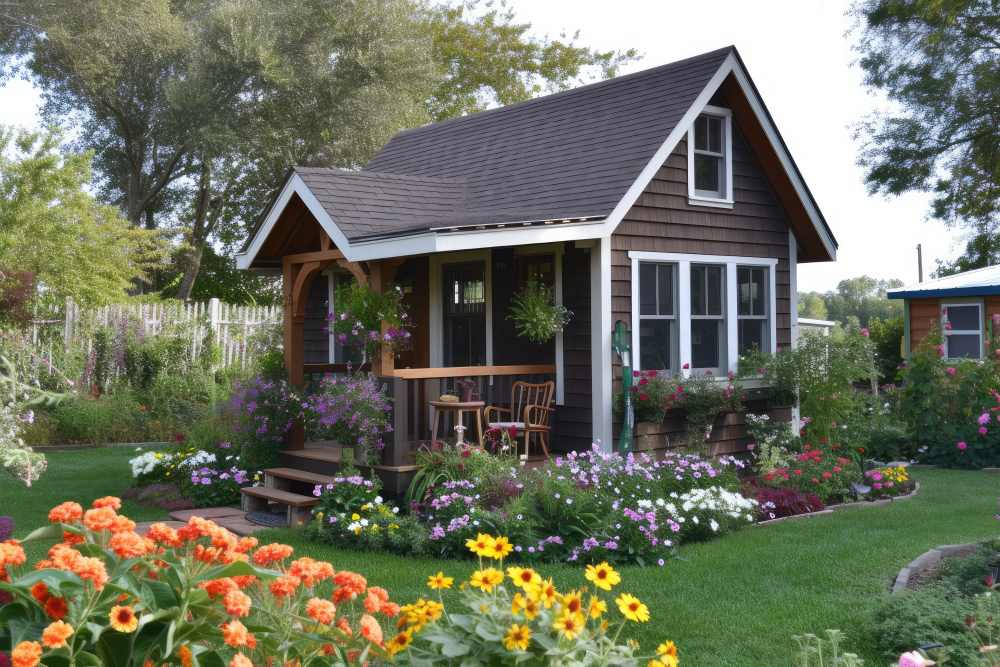California’s housing market is highly competitive, and Accessory Dwelling Units (ADUs) have become a popular solution to create more housing options. ADUs, also known as granny flats or in-law units, are secondary living spaces on properties with a single-family residence. These units typically include essential amenities like a kitchen, bathroom, and sleeping area.
Building an ADU offers numerous benefits, such as generating rental income, accommodating family members, or creating a home office. However, navigating California ADU regulations and requirements can be overwhelming. This guide simplifies the process by breaking down the key rules and requirements, helping you make informed decisions for your ADU project.
California ADU Requirements: Understanding Size and Use Regulations
Minimum and Maximum Size:
California law provides flexibility for ADU designs by eliminating minimum size requirements. However, maximum sizes are subject to local regulations. Detached ADUs are generally capped at 1,200 sq. ft., while attached ADUs are typically limited to 50% of the main house’s floor area. That said, California state law ensures you can build at least an 800 sq. ft. ADU on any property, regardless of local limits.
Number of ADUs per Property:
California allows one detached ADU, one attached ADU, and one Junior ADU (JADU), which is a converted space within the main house, such as a garage or basement. Local ordinances may impose additional restrictions.
Permitted Uses:
ADUs can be used for residential purposes, including long-term rentals, multigenerational living, home offices, guest suites, or art studios. Note that short-term rentals (less than 30 days) might face additional local regulations.
Streamlined Permitting: Faster Approval for ADU Projects
California has made significant strides in simplifying the ADU permitting process:
- Reduced Timelines: New legislation reduces approval timelines from 120 days to just 60 days, speeding up the process.
- Ministerial Reviews: ADU projects that meet all local standards can benefit from ministerial reviews, meaning the approval process is fast and free from discretionary delays.
- Over-the-Counter Permits: Some cities even offer over-the-counter permits for ADUs that comply with size and setback requirements.
Important: Always check with your local building department for the most current regulations, as local ordinances may impose additional ADU requirements beyond state law.
Setbacks and Property Lines: Ensuring Your ADU is Properly Placed
Setbacks define the minimum distance between your ADU and property lines. Here’s a general overview:
- Side and Rear Setbacks: Typically 4 feet for both detached and attached ADUs, but local requirements may vary.
- Front Yard Setbacks: Recent legislation allows more flexibility, removing previous restrictions that could have denied permits for ADUs encroaching on front setbacks.
Consult a professional architect or contractor to ensure your ADU meets all setback requirements and complies with local zoning laws.
Owner-Occupancy Requirements for ADUs
California Assembly Bill (AB) 976 clarified owner-occupancy requirements for ADUs:
- No Owner-Occupancy Restrictions (After 2025): Starting January 1, 2025, local agencies can no longer enforce owner-occupancy requirements for new or converted ADUs. This means you can rent out your ADU as an income property without living on-site.
- Junior ADUs (JADUs): Owner-occupancy rules still apply to JADUs, which are converted spaces within the main house. Existing ADU permits issued before 2025 may also carry owner-occupancy requirements.
Be sure to verify occupancy rules for your specific project based on both state and local regulations.
Fire Safety and Accessibility: Building Code Compliance
All ADUs in California must meet the state’s building code, particularly concerning fire safety and accessibility:
- Fire Safety: Fire sprinklers and smoke detectors are generally required in ADUs, with specific rules varying based on size and occupancy.
- Accessibility: ADUs may need to follow California Building Code (CBC) Chapter 11A, which includes features like wider doorways, accessible bathrooms, and ramps to accommodate individuals with disabilities.
Key Assembly Bills Shaping California ADU Regulations
Several Assembly Bills have significantly influenced California ADU regulations:
- AB 881 (2020): This bill eliminated owner-occupancy requirements for ADUs, allowing homeowners to build them solely for rental purposes. However, this provision was initially set to expire in 2025.
- AB 976 (2023): AB 976 removed the expiration clause from AB 881, ensuring that owner-occupancy restrictions are permanently lifted.
- AB 1033 (2024): This bill allows homeowners to sell their ADUs separately from their primary residences, offering new investment opportunities.
- SB 897 (2022): This bill increased the maximum height for ADUs near transit stops, reduced parking requirements, and allowed smaller lot sizes for ADU construction, making it easier to qualify more properties for ADUs.
Conclusion: Simplifying California ADU Requirements
Understanding California ADU regulations is crucial for successful ADU construction. From size and use limitations to streamlined permits and building codes, compliance with state and local rules is essential. Always consult with a professional architect, contractor, or attorney to ensure your project meets the latest California ADU requirements.
Remember, this blog provides a general overview and shouldn’t be considered a substitute for professional legal or planning advice. For project-specific guidance, consult with a qualified architect, contractor, or real estate attorney familiar with the latest ADU regulations in your area.


